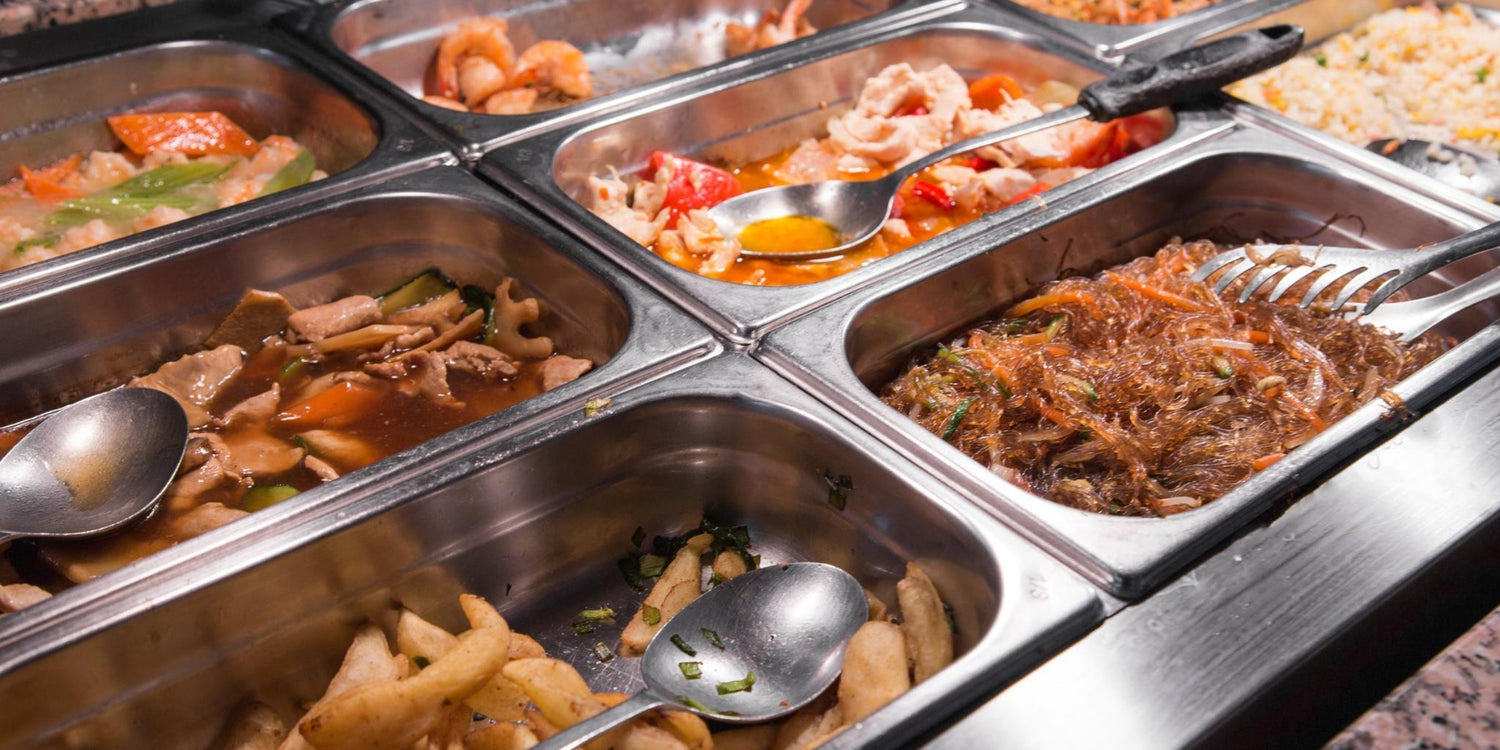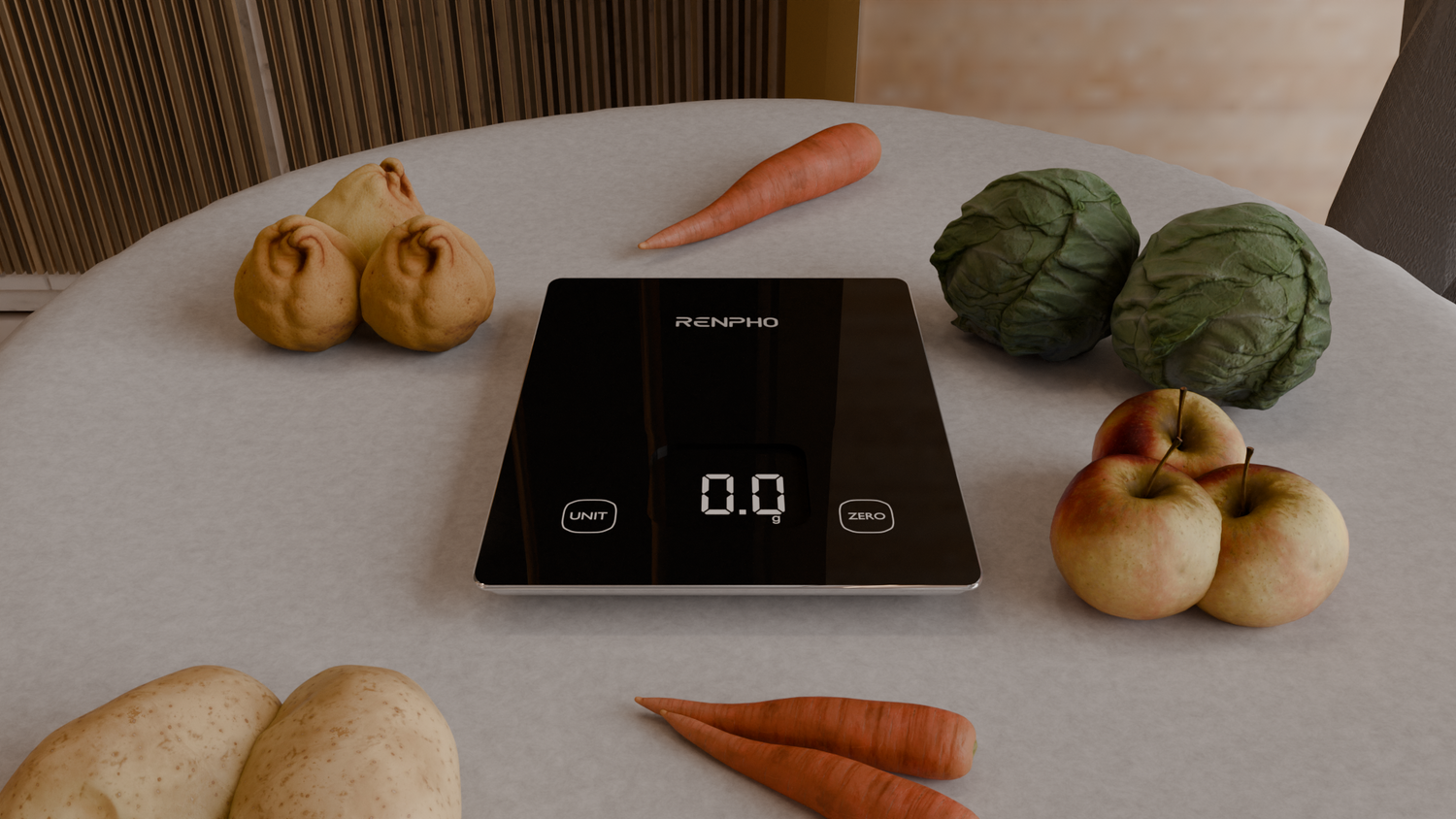Weighing In on Waste: How Food Scales Can Help Reduce Food Waste

Stay tuned to our latest news
Food waste is a global issue of alarming proportions, with one-third of the world's food production being lost or wasted each year. In our quest for sustainable solutions, we often overlook a simple yet powerful tool: food scales. These humble kitchen devices, known for their precise measurements, can play a significant role in minimizing food waste.
So, let's explore the ways in which food scales can help us tackle food waste head-on. From portion control to expiration date management, these scales offer practical assistance in our journey toward a more sustainable and conscious approach to food consumption. Remember that together, we can manage food waste properly and create a greener future—one meal and one gram at a time.
Why Is Food Waste an Issue?

Food waste is a significant issue that has far-reaching consequences for the environment, economy, and society. The causes of food waste are multi-faceted, and the consequences are damaging both locally and globally.
One of the primary causes of food waste is overproduction and inefficiencies in the food supply chain. Food producers often produce more than necessary to meet consumer demand, leading to a surplus that ends up being wasted. Additionally, inadequate storage and transportation infrastructure can result in spoilage and damage, leading to food waste.
The consequences of food waste are extensive. Environmentally, wasted food contributes to greenhouse gas emissions, as decomposing food releases methane, a potent greenhouse gas. It also exacerbates the pressure on natural resources such as land, water, and energy that are used in the production and distribution of food. Economically, food waste represents a significant loss of resources, including labor, water, and land that could have been used more effectively. Socially, food waste exacerbates food insecurity as people in need are deprived of nutritious meals. It also perpetuates inequalities by increasing food prices for consumers.
The top causes of food waste include factors related to households and restaurants. In households, improper meal planning, excess purchasing, and improper storage contribute to food waste. Similarly, restaurants often face challenges in portion control, overstocking, and inadequate inventory management.
Effective waste reduction strategies are needed to address this issue. This includes implementing more efficient production and distribution methods, educating consumers about proper food storage and usage, and encouraging donation and composting initiatives. Monitoring and tracking waste events are critical to identifying problem areas and making necessary changes to reduce food waste effectively.
What Role Do Food Scales Play in Reducing Food Waste?

Food scales play a crucial role in reducing food waste by tracking and measuring the amount of wasted food. These scales provide an effective way to keep tabs on the amount of food that is being discarded, allowing for better management and reduction of food waste.
One key feature of food scales is the tare function, which is present in scales such as the RENPHO Smart Food Scale 2. This feature subtracts the weight of the plate or container holding the food, enabling accurate measurements of the actual food portion. By utilizing this function, food scales ensure that measurements are precise and not skewed by the weight of the plate. This helps in accurately tracking the amount of food wasted.
Furthermore, understanding the amount of wasted food is essential in making necessary adjustments to minimize waste. Food scales help individuals and organizations identify patterns of waste, such as overestimating portion sizes or buying excess food. By analyzing this data, they can make informed decisions about portion control, purchasing habits, and menu planning, leading to a reduction in food waste.
5 Tips to Minimize Food Waste in the Kitchen

Minimizing food waste in the kitchen is not only good for the environment but also for our wallets. By implementing a few simple strategies, we can reduce the amount of food that goes uneaten and ultimately ends up in landfills.
-
Learn Mindful Meal Prepping
Mindful meal prepping is a concept that focuses on preparing meals with intention and awareness. It emphasizes the importance of preparing meals with intention, considering portion sizes, nutritional values, and reducing food waste. By practicing mindful meal prepping, we can experience numerous benefits and contribute to a more sustainable lifestyle.
When we plan and prepare our meals mindfully, we ensure that each dish is served with the right amount of food. This not only helps us maintain a healthy and balanced diet but also prevents overeating or under-serving. Consistent portion sizes reflect positively on our overall well-being and satisfaction with our meals.
Another significant advantage of mindful meal prepping is the reduction of food waste. When we plan our meals in advance and prepare portions accurately, we minimize the chances of having leftovers or excess food that goes to waste. By using precise measurements and calculations, we can efficiently use ingredients, save money, and minimize our environmental impact.
-
Check the Portion Sizes
Checking portion sizes is crucial in minimizing food waste and promoting the culture of taking leftovers. By carefully monitoring the amount of food we serve ourselves and our families, we can significantly reduce the amount of food that is thrown away.
Using a food weighing scale is an effective way to calculate ideal portion sizes at home. This enables us to accurately measure the amount of food being served, ensuring that we are satisfied without wasting excess. Additionally, incorporating portion control practices can lead to more uniform consistency in the quality of our home-cooked meals, as we can precisely portion out ingredients for each dish.
Utilizing a food weighing scale allows for precise calculations and helps avoid over- or under-serving. This not only minimizes the amount of food wasted but also enhances our overall satisfaction with the meals we prepare. When we receive an appropriate amount of food to fulfill our hunger, we are more likely to finish what is on our plate and have the option to take home any leftovers if desired.
-
Proper Storage and Organization
Proper storage and organization are essential in a home kitchen to maintain food safety and efficiency. Here are some methods to ensure food items are stored correctly:
Firstly, use appropriate containers for different types of food. Use airtight containers for perishable items such as meats and dairy products to prevent spoilage. Clear and stackable containers are ideal for dry goods such as grains, flour, and pasta, as they allow easy visual identification and save space.
Labeling systems are crucial for keeping track of food items. Use labels to record the date of purchase, expiration date, and contents of each container. This helps to rotate the stock and prevent the use of expired ingredients. Additionally, color-coded labels can be used to differentiate between different food categories, further enhancing organization.
To reduce food waste, weighing scales can be used. They accurately measure the weight of the food items, allowing for precise portion control. By using the tare function on the scale, the weight of the plate or container can be subtracted, ensuring only the weight of the food is measured.
By implementing proper storage techniques, using appropriate containers, labeling systems, and utilizing counting scales or check weighing scales, a household can efficiently manage food items, reduce waste, and provide safe and high-quality meals for the family.
-
Practice First-In, First-Out (FIFO)
To practice first-in, first-out (FIFO) in the home kitchen, it is important to have a systematic approach to organizing and rotating inventory. This method ensures that food items are used in the order they were purchased, reducing the likelihood of food waste and maintaining food quality and safety.
To begin, it is crucial to have a clear understanding of the inventory on-hand. This can be achieved by conducting regular checks of the refrigerator, freezer, and pantry, and updating a running inventory list. Maintaining a well-organized storage area is also essential. All food items should be properly labeled with the purchase date to easily identify older stock.
To implement FIFO, start by moving older items to the front of shelves and placing newer items towards the back. This way, older items will be used before they reach their expiration date. It is important to regularly check the storage areas and rotate the stock accordingly.
Perishable goods, such as meats, dairy, and fresh produce, require special attention. These items should be stored in a way that allows easy access to the oldest ones. By doing so, the chances of spoilage and food waste are greatly reduced.
Complying with food safety guidelines is essential when practicing FIFO. This includes adhering to proper storage temperatures and keeping track of expiration dates. Additionally, it is important to educate household members on the importance of FIFO and ensure that they are consistently following these practices.
By implementing FIFO and organizing and rotating inventory based on this method, households can effectively reduce food waste, maintain food quality and safety, and make the most of their food purchases.
-
Re-Use and Re-Purpose Food Waste
Re-using and re-purposing food waste is an effective way to reduce waste and promote sustainable practices. There are various methods that can be employed to give new life to food that would otherwise be discarded.
One simple way to re-use food waste is through composting. Spoilt greens and vegetable waste can be converted into nutrient-rich compost by allowing them to decompose naturally over time. This compost can then be used to nourish plants and create a healthy soil environment.
Another method is to utilize produce that may not look visually appealing but is still in good condition. Instead of throwing away "ugly" fruits and vegetables, they can be juiced or incorporated into soups and stews. This not only reduces waste but also allows for creative and delicious recipes.
Another approach to re-purposing food waste is by feeding it to livestock. Many food scraps, such as leftover bread, grains, and vegetable peels, can be safely given to animals as feed. This not only reduces waste but also provides a sustainable source of nutrition for livestock.
Lastly, excess produce can be donated to food banks or community organizations. Instead of allowing surplus food to go to waste, it can be shared with those in need.
Takeaway
Food waste is a significant global issue, with one-third of the world's food production being lost or wasted annually. This problem has far-reaching environmental, economic, and social consequences. Factors such as overproduction, inefficient supply chains, and improper storage and management contribute to the food waste crisis.
Food scales play a crucial role in addressing this issue. By providing precise measurements and tracking data, these scales enable accurate portion control, better inventory management, and more efficient recipe development. Features like the tare function allow users to measure the weight of food without the container, leading to more informed decisions and reduced waste. Moreover, the data gathered by connected food scales can help identify patterns and provide personalized recommendations to foster sustainable food consumption habits. Leveraging the capabilities of these humble kitchen tools is a simple yet powerful step towards minimizing food waste and creating a greener future.
Renpho Health Tips
-

Satisfying Every Palate: How to Cater to Specialized Dietary Requirements
April 4, 2024
Read more >
-

Why You Need a Smart Food Scale in 2024
March 11, 2024
Read more >
-

Celebrate National Oreo Cookie Day with These 5 Healthy Alternatives
March 5, 2024
Read more >
-

Understanding Portion Control: Can a Regular Scale be Accurate for Weighing Food?
March 4, 2024
Read more >
-

5 Reasons Why Weighing Scales Are the Secret to Elevating Your Cooking Skills
February 26, 2024
Read more >





